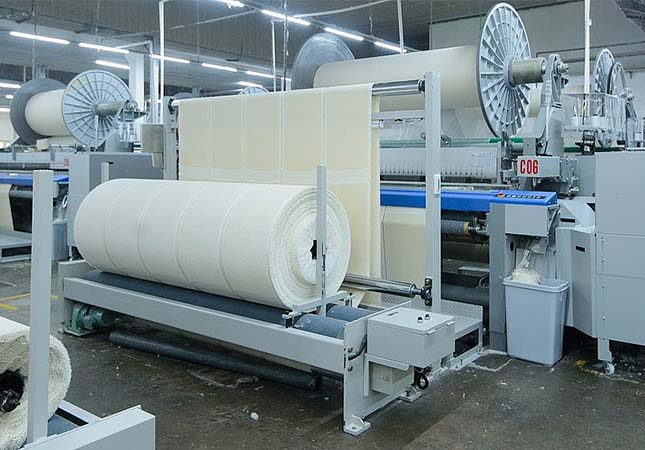The main processes of textile production are as follows: Spinning machinery spins various natural fibers and chemical fibers into yarns. Weaving machinery weaves the yarns into fabric. Printing and dyeing machinery colors and finishes the fabric. Finally, clothing machinery transforms the fabric into garments.

Textile Machinery encompasses a wide range of categories, and textile machinery companies typically specialize in producing only some of these categories.
1. Spinning Machinery
Spinning machinery is used to spin various natural fibers (such as cotton, wool, flax, silk) and chemical fibers into yarns. In China, cotton spinning machinery accounts for over 60% of the market share.
2. Weaving Machinery
The weaving process includes preparation, weaving, and finishing processes.
Weaving machinery is used to interlace warp and weft yarns vertically to form fabric. During weaving, the weaving machine introduces the weft yarn into the stretched warp yarn layer (consisting of several parallel warp yarns of the same length) to form the fabric. This process is known as "weft insertion." There are two main types of weaving machinery based on the method of weft insertion: loom weaving and shuttleless weaving. In loom weaving, the weft yarn is inserted using a shuttle, usually made of durable and resilient materials like wood or composite materials. Loom weaving involves repeated projections of the shuttle to complete the weft insertion, resulting in significant vibrations, high noise levels, slow speed, and low efficiency. Shuttleless weaving, introduced to the market since the 1950s, uses a small and lightweight weft insertion device (such as air or water jets or rapier heads) instead of a shuttle. Shuttleless weaving has gradually replaced loom weaving due to its advantages, including reduced weight, minimal vibrations, low noise, higher speed, and increased insertion rate. The transition to shuttleless weaving has become a trend in the global weaving machine market. Currently, developed countries have a shuttleless weaving machine market share of over 90%, while in China, it is only around 50%. There is significant room for the development of the shuttleless weaving machine market in China. Shuttleless weaving machines are further categorized based on the type of weft insertion carrier, such as rapier looms, air-jet looms, water-jet looms, and projectile looms.
3. Printing and Dyeing Machinery
The printing and dyeing process includes pre-treatment, dyeing, printing, and post-processing stages.
Subsequent Processes in Textile Production and Processing
After the completion of textile production, the most crucial steps are fabric inspection and packaging. These are essential stages that directly impact the quality and value addition of textile products. Since many textiles may have defects after production, the quantity and severity of defects determine the grade and quality of the textile, thus affecting the brand reputation and pricing. Therefore, fabric inspection is an indispensable step. Fabric inspection machines, with advantages like high efficiency and low error rates, have gradually replaced manual fabric inspection and gained prominence in the textile industry.
Even though the textiles that pass the fabric inspection can be considered qualified products, they are not yet considered commodities. The critical step to turn them into commodities is packaging. "People rely on clothing, and beauty relies on packaging." Packaging machines not only help make textiles more compact, thus saving space, but they also enhance the visual appeal of the textiles, making them more marketable.
SUNTECH Textile Machinery offers a comprehensive range of products that cater to various fabric types. Our product lineup includes, but is not limited to, pinking machine, loom machine, weaving machine, beam truck, fabric cutting machine, motorized beam trolley, beam storage, and fabric inspection machine. With our innovative approach and extensive experience, SUNTECH Textile Machinery remains at the forefront of the textile industry. We warmly welcome requests for quotes and cooperation opportunities from you!




